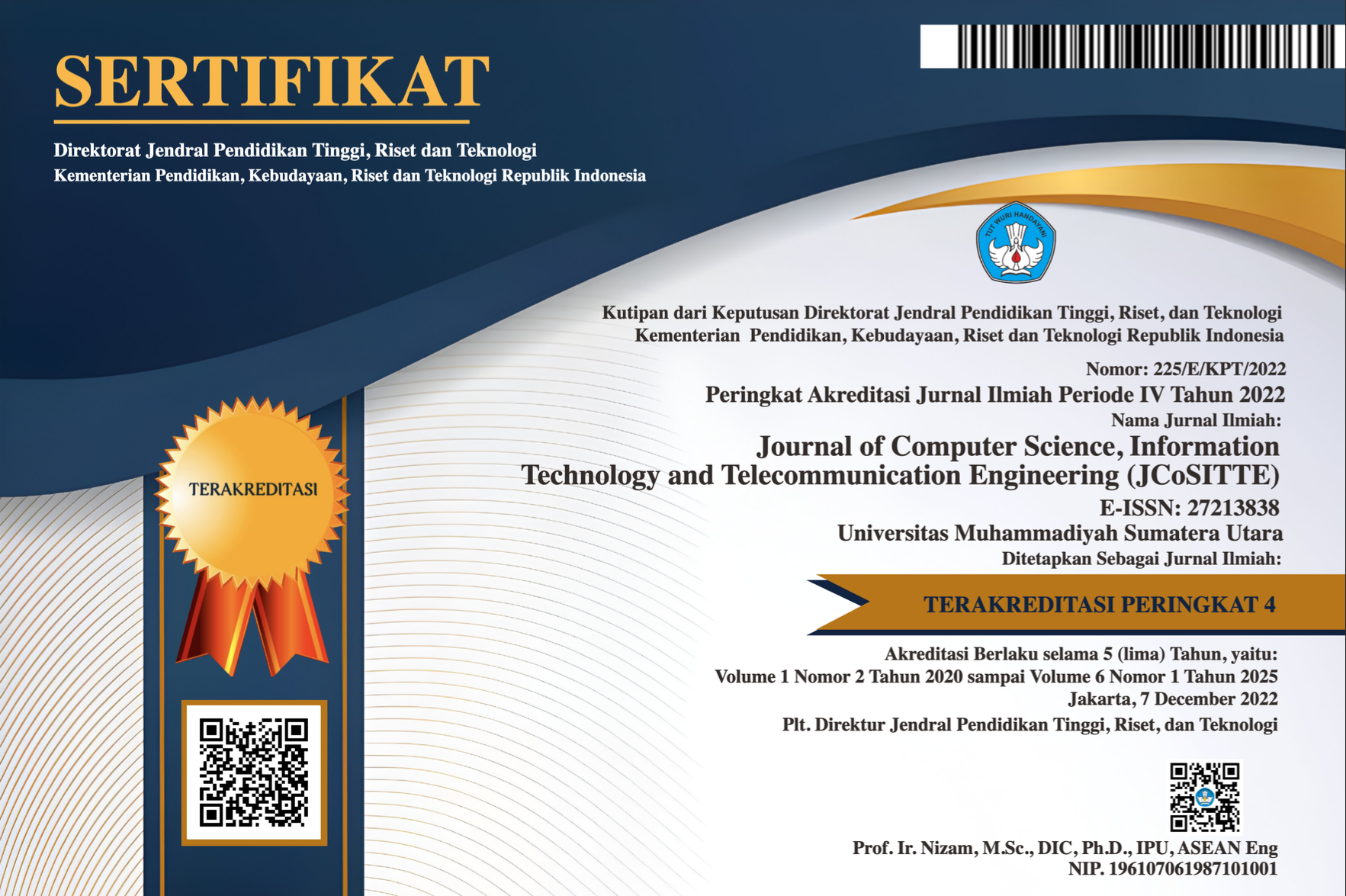The impact of the project-based learning (PBL) on the motivation of first-year students at Universitas Negeri Medan
Abstract
Keywords
Full Text:
PDFReferences
Azis, R., & Kurniawan, D. (2019). Strategi Peningkatan Kemampuan Peternak Itik Melalui Pelatihan Manajemen Pakan Itik Terhadap Kelompok Peternak Itik Hibrida Super di Desa Slorok Kecamatan Doko Kabupaten Blitar. Jurnal Pengabdian Dan Pemberdayaan Nusantara (JPPNu), 25–31.
Berg, C. A. R. (2005). Factors related to observed attitude change toward learning chemistry among university students. 6(1), 1–18.
Bluemenfeld, P. C., Soloway, E., Marx, R. W., Krajcik, J. S., Guzdial, M., & Palincsar, A. (1991). Motivating Project-based learning: sustaining the doing, supporting the learning. Educational Psychologist, 26(3), 369–398.
Byun, Y. K., Kim, Y. H., & Son, M. (2007). Educational methods and educational engineering. Hagjisa.
Centra, J. A., & Gaubatz, N. B. (2000). Student perceptions of learning and instructional effectiveness in college course.
Chang, L. C., & Lee, G. C. (2010). A team-teaching model for practicing project-based learning in high school: Collaboration between computer and subject teachers. Computers and Education, 55(3), 961–969. https://doi.org/10.1016/j.compedu.2010.04.007
Choi, J. I., & Jang, K. W. (2010). Teaching with PBL. Hagjisa.
Covington, M. V. (2000). Goal Theory, Motivation, and School Achievement: An Integrative Review. In Annu. Rev. Psychol (Vol. 51). www.annualreviews.org
Dalgety, J., Coll, R. K., & Jones, A. (2003). Development of chemistry attitudes and experiences questionnaire (CAEQ). Journal of Research in Science Teaching, 40(7), 649–668. https://doi.org/10.1002/tea.10103
Guerra, A., & Kolmos, A. (2011). Comparing problem based learning models: suggestions for their implementation. PBL Across the Disciplines: Research into Best Practice 3rd International Research Symposium on PBL 2011, 3–14.
Huang, H. M., Rauch, U., & Liaw, S. S. (2010). Investigating learners’ attitudes toward virtual reality learning environments: Based on a constructivist approach. Computers and Education, 55(3), 1171–1182. https://doi.org/10.1016/j.compedu.2010.05.014
Keller, J. M. (2010). Motivational Design for Learning and Performance. In Motivational Design for Learning and Performance. https://doi.org/10.1007/978-1-4419-1250-3
Kim, H. S., & Lee, J. H. (2012). A study on the moderating role of participatory safety climate in the relationship between task and relationship conflicts in the team. Journal of Korean Society Business Administration, 19(6), 115–132.
Köseoğlu, Y. (2013). Educational Research and Reviews Academic motivation of the first-year university students and the self-determination theory. 8(8), 418–424. https://doi.org/10.5897/ERR12.124
Kutu, H., & Sozbilir, M. (2011). Adaptation of Instructional Materials Motivation Survey to Turkish: A Validity and Reliability Study. In Necatibey Faculty of Education Electronic Journal of Science and Mathematics Education (Vol. 5, Issue 1).
Lee, H.-J., & Lim, C. (2012). Peer Evaluation in Blended Team Project-Based Learning: What Do Students Find Important? Educational Technology & Society, 15(4), 214–224.
Lee, J. W., & Choi, E. S. (2015). An analysis of structural relationships between variables of university students’ self-leadership, social support, career motivation, career decision-making self- efficacy, and career maturity. Interdisciplinary Journal of Adult & Continuing Education, 18(1), 33–54.
Liu, M. (2003). Enhancing Learners’ Cognitive Skills Through Multimedia Design. Interactive Learning Environments, 11(1), 23–39. https://doi.org/10.1076/ilee.11.1.23.13686
Mihardi, S., Harahap, M. B., & Sani, R. A. (2013). The Effect of Project Based Learning Model with KWL Worksheet on Student Creative Thinking Process in Physics Problems. Journal of Education and Practice, 4(25). www.iiste.org
Mulvey, P. W., & Klein, H. J. (1998). The Impact of Perceived Loafing and Collective Efficacy on Group Goal Processes and Group Performance. In ORGANIZATIONAL BEHAVIOR AND HUMAN DECISION PROCESSES (Vol. 74, Issue 1).
Musa, F., Mufti, N., Latiff, R. A., & Amin, M. M. (2011). Project-based learning: Promoting meaningful language learning for workplace skills. Procedia - Social and Behavioral Sciences, 18, 187–195. https://doi.org/10.1016/j.sbspro.2011.05.027
National Audit Office (NAO). (2007). Staying the course: The retention of students in higher education.
Nucci, L., Krettenauer, T., & Narvaez, D. (2014). Handbook of Moral and Character Education Second Edition. Routledge.
Ratelle, C. F., Guay, F., Vallerand, R. J., Larose, S., & Senécal, C. (2007). Autonomous, Controlled, and Amotivated Types of Academic Motivation: A Person-Oriented Analysis. Journal of Educational Psychology, 99(4), 734–746. https://doi.org/10.1037/0022-0663.99.4.734
Robles, M. M. (2012). Executive Perceptions of the Top 10 Soft Skills Needed in Today’s Workplace. Business Communication Quarterly, 75(4), 453–465. https://doi.org/10.1177/1080569912460400
Ryan, R. M., & Deci, E. L. (1985). Self-Determination Theory and the Facilitation of Intrinsic Motivation, Social Development, and Well-Being Self-Determination Theory. Ryan.
Ryan, R. M., & Deci, E. L. (2000). Intrinsic and Extrinsic Motivations : Classic Definitions and New Directions. 67, 54–67. https://doi.org/10.1006/ceps.1999.1020
Shah, M., Lewis, I., & Fitzgerald, R. (2011). The renewal of quality assurance in Australian higher education: The challenge of balancing academic rigour, equity and quality outcomes. In Quality in Higher Education (Vol. 17, Issue 3, pp. 265–278). https://doi.org/10.1080/13538322.2011.614474
Solomon, G. (2003). Project-Based Learning: a Primer. http://www.techlearning.com/db_area/archives/TL/2003/01/project.php
Syakur, A. (2021). Efficacy of Collaborative Strategic for Reading (CSR) To Improve Students’ Reading Comprehension (Vol. 4).
Syakur, A., & Panuju, R. (2020). Peran Strategis Public Relation dalam Pengembangan Reputasi Pendidikan Tinggi: Studi Kasus Promosi di Akademi Farmasi Surabaya. BRILIANT: Jurnal Riset Dan Konseptual, 5(1). https://doi.org/10.28926/briliant
Wang, S., Christensen, C., Xu, Y., Cui, W., Tong, R., & Shear, L. (2020). Measuring Chinese Middle School Students’ Motivation Using the Reduced Instructional Materials Motivation Survey (RIMMS): A Validation Study in the Adaptive Learning Setting. Frontiers in Psychology, 11. https://doi.org/10.3389/fpsyg.2020.01803
Wats, M., & Wats, R. K. (2009). Developing soft skills in students. International Journal of Learning, 15(12), 1–10. https://doi.org/10.18848/1447-9494/CGP/v15i12/46032
DOI: https://doi.org/10.30596/jcositte.v5i1.17973
Refbacks
- There are currently no refbacks.





.png)

